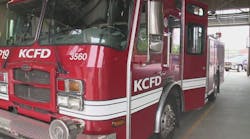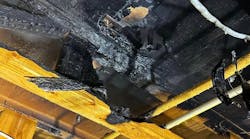During this recession we have learned the fire service is not immune from budget cuts, layoffs and even closing of fire stations. In many cases fire prevention has been the easiest to cut because of the general perception that it won't impact the safety of the citizens we protect. If you look at the news headlines in our profession, very little is mentioned of fire prevention cuts even though they tend to be the first and most severe given the percentage of program impact.
Instead, lots of focus is placed on operational resources or salary cuts. We all know that both divisions (operations and prevention) are subject to fiscal impacts. We also should not expect those reductions to be replenished as soon as the recession ends. It may take years and it is quite possible that we may never get them back. The question we must face is how do we still provide fire prevention services in an environment with cuts across the board?
We need to determine the level of fire prevention commitment. In order to provide adequate fire prevention services it will take an entire department. We will need to rely heavily on accurate risk assessments and continued fire prevention efforts at the company officer level.
Let's start with risk assessment.
What Does Your Public View As Their Level of Acceptable Risk?
Ask us for the single hardest question to answer in the fire service, and this is probably the one: What does the public view as their established comfort level with their acceptable risk? The truth is, they probably do not even know what this means. If they do, their perceptions likely will be all over the board because we in the fire service have failed to help our community understand what this really means to them.
Determining your public's acceptable risk is crucial. Otherwise, the fire service will continue to be in the position of "telling everyone what is good for them" based on our opinions and biases, rather than performing our job, which is to do what the public wants and in fact pays us to do. We know they want help when they are having a bad day. They want someone to be there fast and make their bad day better. In prevention, we strive to eliminate these bad days, but now that we are faced with less staff, we need to be able to prioritize how we focus our prevention efforts.
We can start by defining the relevant and credible threats and outcomes. Remember, you cannot protect everyone from everything. This requires a reasonable approach based on your organizational capabilities. Make sure the threats you include are among those that your mission statement addresses.
Once you have defined the threats, what are the possible outcomes? Explore both the direct and indirect effects. What are the monetary impacts to individuals, the community, and other areas of concern? What is the duration of these affects?
Identify the costs of recovery and reclamation, not just the primary damage. What are the life threats? Historical structures have a value (restoration, maintenance, and possibly revenue production). Manufacturing plants have a value (number of employees and lost income, structure value, business interruption costs, lost customer base, profit, tax revenue, etc.). This analysis can give you a comparative loss potential that must be factored into your overall analysis. Sometimes the cost to protect costs more than the amount lost. This is where the public may have a valid point with regard to us "not worrying about it."
Conduct a comprehensive analysis of your local incidents by area of study. These data not only provide you with the number and types of incidents but give you a geographical representation of their location and magnitude.
Determine the risk impact and study the frequency and history of events by parcel, occupancy type, or whatever other data field best suits your objective. At the same time, look at the impact of your losses as a result of specific consequences for these specific data fields. For example: how many apartment fires are you having per year and in what parts of town? Next ask what are the life and monetary losses for each of these fires in each of these areas. Overlay and compare the data to get a perspective on which locations are in the worst shape.
Use this to focus where you need to put your limited resources.
How Do We Get It Done?
The only way to be effective during staffing cuts is to involve others in fire prevention efforts. One of the best solutions is to ensure the company officers are empowered to be part of the fire prevention program. They are leaders in our departments and are on the street seeing first-hand the occupancies we identified above. They have the ability to identify and fix problems. They are the community heroes and dynamic leaders that the community loves and adores. Engaged company officers are a huge asset and one that should be relied upon to continue and foster the fire prevention and injury prevention effort. It is important that they be involved and leading particularly with the reductions and cuts that are overwhelming our nation's fire service.
BRETT LACEY, a Firehouse.com Contributing Editor, is the Fire Marshal for the Colorado Springs, CO, Fire Department and a professional engineer. He has over 27 years in the fire service and has served on various technical committees including NFPA 1031, IFSTA committee for Inspection practices, and Fire Detection and Suppression Systems and the Colorado Fire Marshal's Association Code Committee. PAUL VALENTINE, a Firehouse.com Contributing Editor, is the Fire Marshal for the Mount Prospect, IL, Fire Department and formerly served as their fire protection engineer. He has a Bachelor of Science Degree in Fire Protection and Safety Engineering Technology from Oklahoma State University and a Master of Science Degree in Management and Organizational Behavior from Benedictine University and is a graduate from the National Fire Academy's Executive Fire Officer Program. Brett and Paul co-authored Fire Prevention Applications, published by Fire Protection Publications. To read their complete biographies and view their archived articles, click here. You can reach Paul by e-mail at: [email protected].





